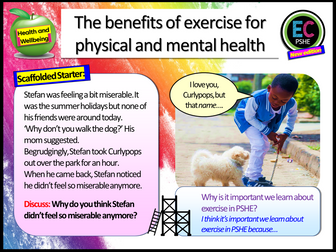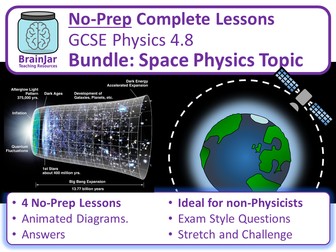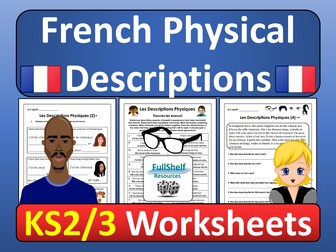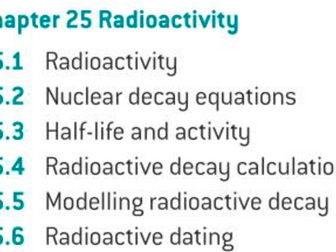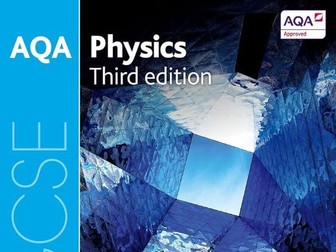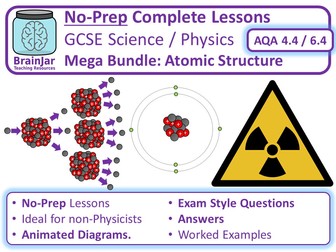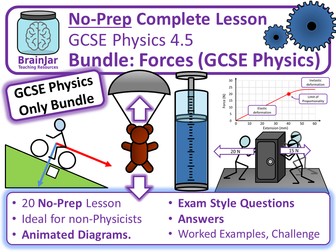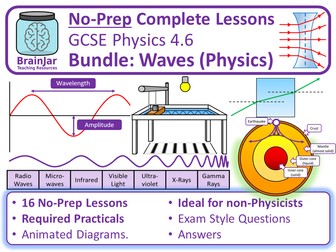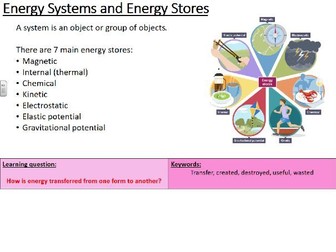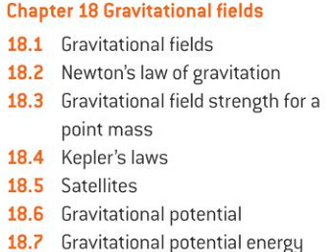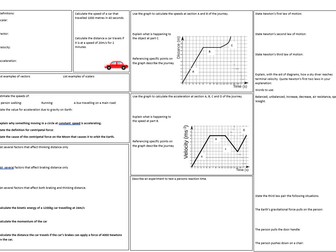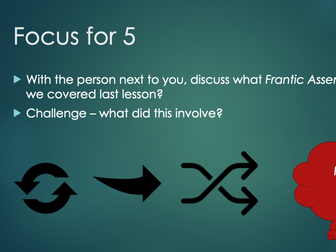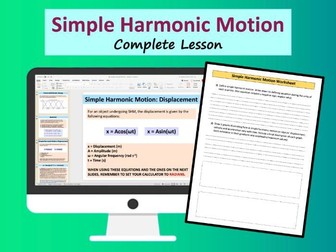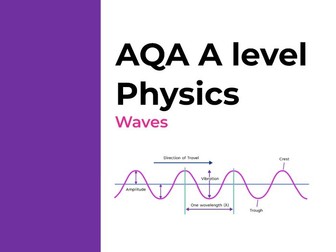Physical Health + Wellbeing PSHE
<p>Exercise, Physical Health + Wellbeing PSHE. This new lesson for 2023-24 allows students to explore the physical and mental benefits of regular exercise. Students will investigate the short-term and long-term effects on the heart, brain, muscles, bones and other areas of the human body. They will learn about different forms of exercise and how it can improve our overall well-being. Includes creative tasks, active tasks, analysis and clip tasks. Best suited to KS3, all editable.</p>
<p>Check out the EC Publishing website for full, affordable PSHE, Citizenship and RE Packages for all year groups including the new 2024 Complete PSHE Package. You can contact us at <a href="mailto:info@ecpublishing.co.uk" target="_blank" rel="nofollow">info@ecpublishing.co.uk</a></p>
<p>Who are EC Resources?<br />
EC Resources are the top TES PSHE providers and are a group of teachers who work together to create easy to use, high quality and editable lessons and units of work. We have created lessons for The Children’s Commissioner, The Bank of England, The British Legion, MACS Charity, Tes, LikeToBe Careers, the Criminal Cases Review Commission (UK Gov) and have also completed PSHE and Citizenship commissions for schools across the UK.</p>
<p>Check out our PSHE Packages on Tes here:<br />
<a href="https://www.tes.com/teaching-resource/pshe-complete-ks3-pshe-11897912">Complete KS3 PSHE and RSE</a><br />
<a href="https://www.tes.com/teaching-resource/complete-ks4-pshe-rse-12059669">Complete KS4 PSHE and RSE</a><br />
<a href="https://www.tes.com/teaching-resource/complete-ks5-pshe-rse-12322716">Complete KS5 PSHE and RSE</a><br />
<a href="https://www.tes.com/teaching-resource/citizenship-citizenship-one-year-s-worth-11551737">One Year of Citizenship and British Values</a><br />
<a href="https://www.tes.com/teaching-resource/pshe-and-citizenship-2-11516562">Complete KS3 RE</a><br />
<a href="https://www.tes.com/teaching-resource/employment-11488708">Complete Careers and Employability</a><br />
<a href="https://www.tes.com/teaching-resource/prejudice-and-discrimination-11363222">AQA Citizenship GCSE Mega Pack</a></p>
<p>Teaching PSHE, RE or Citizenship GCSE next year? Why not join our <a href="https://www.facebook.com/groups/2069848026578974/" target="_blank" rel="nofollow">Citizenship and PSHE teachers Facebook group,</a> with 12,000 other teachers, for guidance, advice and resource sharing.</p>
